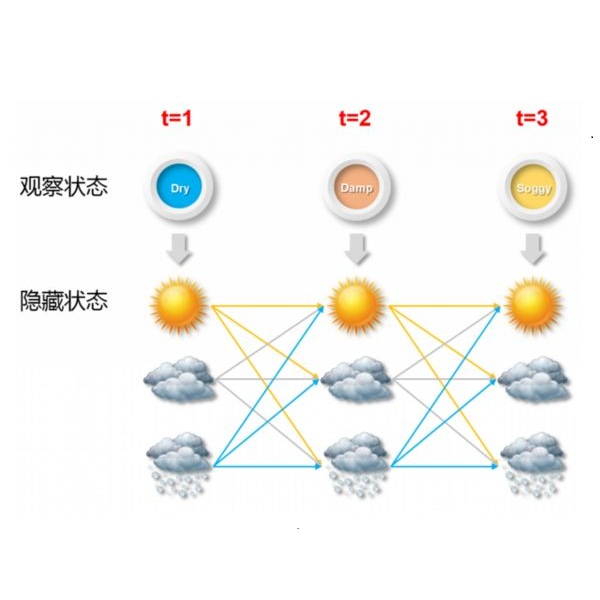Divide-and-conquer Bayesian methods consist of three steps: dividing the data into smaller computationally manageable subsets, running a sampling algorithm in parallel on all the subsets, and combining parameter draws from all the subsets. The combined parameter draws are used for efficient posterior inference in massive data settings. A major restriction of existing divide-and-conquer methods is that their first two steps assume that the observations are independent. We address this problem by developing a divide-and-conquer method for Bayesian inference in parametric hidden Markov models, where the state space is known and finite. Our main contributions are two-fold. First, after partitioning the data into smaller blocks of consecutive observations, we modify the likelihood for performing posterior computations on the subsets such that the posterior variances of the subset and true posterior distributions have the same asymptotic order. Second, if the number of subsets is chosen appropriately depending on the mixing properties of the hidden Markov chain, then we show that the subset posterior distributions defined using the modified likelihood are asymptotically normal as the subset sample size tends to infinity. The latter result also implies that we can use any existing combination algorithm in the third step. We show that the combined posterior distribution obtained using one such algorithm is close to the true posterior distribution in 1-Wasserstein distance under widely used regularity assumptions. Our numerical results show that the proposed method provides an accurate approximation of the true posterior distribution than its competitors in diverse simulation studies and a real data analysis.
翻译:Bayesian 分裂和征服方法由三步组成: 将数据分割成更小的计算可控子集, 对所有子集平行运行一个抽样算法, 并合并参数从所有子集中抽取。 组合参数抽取用于在大规模数据设置中高效的后部推断。 现有分数和征服方法的一个主要限制是, 其前两步假设观测是独立的。 我们通过在对称隐藏的Markov 序列中开发一种分解和征服推论方法来解决这个问题, 该模型显示的是, 我们的主要贡献是双倍的。 首先, 在将数据分割成更小的连续观察区之后, 我们修改在子集中进行后部推算的可能性计算的可能性, 这样子集和真实子集分布的差差差差差差, 其现在的子集数数量根据隐藏的 Markov 序列的混合特性被适当选择, 然后我们显示, 使用更近的概率定义的子集分布是两个不同的。 我们使用一个直径序列的序列分析, 显示我们现有的直径序列分析, 显示一个正序序列分析, 显示我们得到的直径的直径的直径分析。




